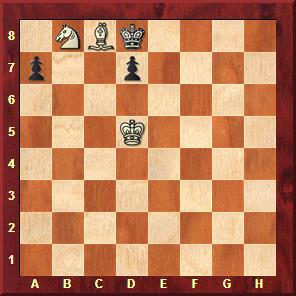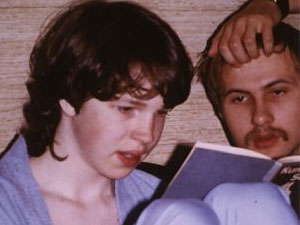ChessBase 2014 Christmas Puzzles
For the fifteenth anniversary of our apparently well-loved Christmas puzzles
we have decided to go back in time and pick some of the best or most popular
puzzles for you. Remember there are GM readers (and one of our regular authors)
out there who were not born when we started the series. For older readers
the cherries we will pick out of the original section will hopefully bring
on nostalgic memories; and the younger ones will learn for the first time
what we have been up to over the years.
(One top GM, who is approaching 2800, wrote us: "Terrible puzzles
on the ChessBase page. Especially the first one. It keeps bothering my brain
during my holidays. It took me couple days to figure out it's must be Black
who is mating, but I am still struggling to see how.")
And of course we will start the new year with our traditional Christmas
puzzle contest. On the first of January 2015 you will get some problems
to solve, with the chance of winning interesting prizes. In the meantime
here are the final three sections for 2014. The page will be updated from
December 29–31.
December 29, 2014: My
favourite studies
 I
was introduced to chess studies by one person, a world champion, and one
book. It was over thirty years ago, in 1981, when a young Finn named Mika
Korhonen came to stay for a week in my home. Mika was part of the Finnish
problem solving team that had won the world championship in the helpmate
section. He had written one of the world's first problem solving programs,
Mika's Mate, for the Apple II computer.
I
was introduced to chess studies by one person, a world champion, and one
book. It was over thirty years ago, in 1981, when a young Finn named Mika
Korhonen came to stay for a week in my home. Mika was part of the Finnish
problem solving team that had won the world championship in the helpmate
section. He had written one of the world's first problem solving programs,
Mika's Mate, for the Apple II computer.
Mika was also an endgame specialist, and he brought with him a book that
we read, virtually from cover to cover, while he was there. It was John
Roycroft's The Chess Endgame Study. Originally the book had appeared
around 1972 and had been called Test Tube Chess, but Mika had the
latest edition with the new title.
There was another guest staying with us at the time. It was a young boy
from England, fifteen years old, tall and lanky, with feminine features
and a giant Elo. It was Nigel Short, still an IM and playing in a Hamburg
Grandmaster Tournament. Every morning, still in his pyjamas, every evening
and on his free days he joined in the fun and solved studies with us. Naturally
he was much better at it, so Mika had to pull out helpmates and other weird
stuff to put the lad in his place.
I still own Roycroft's book, which Mika left behind, unable to bear the
traumatic parting scenes that would have inevitably followed. It is well-thumbed,
with dog's ears and little slips of paper in it, and pencilled notes on
the side of hundreds of positions. These include solving times for Nigel
and other top GMs who visited me, as well as for early chess computers.
Big heavy "X"s mark my favourite studies. My taste has not changed
substantially over the years.

15-year-old Nigel Short and Mika Korhonen solving
puzzles
M. Klyatskin, Schachmat 1924

White to play and win
Let us start solving this position. 1.Rxa8 is naturally the first move
we check, but 1...Nxa8 2.Kxa7 Kxc6 3.Kxa8 Kb5 is an obvious draw. So we
check 2.Kb7 Nc7 3.a6 Nxa6, which also only draws.
So let's try 1.axb6 Rxb8 2.bxa7, but again 2...Re8 (for instance) 3.Kb7
Re7+ is a draw (4.Kb8 Rxa7).
What else? 1.c7 looks promising, since Black can't take the rook. But after
1...Kxc7 2.Rxa8 Nxa8 we are once again left with a draw.
So how on earth is White to win? Well, you can enter the study in Fritz
or Komodo and find out in a millisecond. Or you can enjoy the exquisite
pleasure we experienced at the time, setting up the position on a chessboard
and working it out all on our own. They were good days.
J. Gunst, Das illustrierte Blatt, 1922

White to play and win
Now this is a really simple position, isn't it? It is immediately clear
that White must capture the black pawns without losing either of his pieces.
But these are being acutely threatened by the black king.
We should be able to work out the solution by brute force. Let's start
by eliminating the obviously bad tries: any king or knight moves drop the
bishop and the game is immediately drawn. This is an enormous help, because
we now know that the first move must be with the bishop.
So let's start with 1.Bxd7. Unfortunately 1...Kc7 results in one of the
white pieces being captured and a draw. This means we are left with only
two candidate moves. We try 1.Bb7, and are again confronted with 1...Kc7.
Black again picks up one of the white pieces and draws. So obviously the
correct move is 1.Ba6. But hang on, after 1...Kc7 where does the knight
go? Once again it is captured and Black has secured the draw.
We have run out of moves, the problem doesn't appear to have a solution.
Maybe there is an error in the diagram? This is a very unpleasant possibility
that come up more often than you'd expect in chess magazines. One spends
hours working on a study and in the next issue the editor writes "we
apologize for an error in the diagram, there was a white pawn missing on
b5" or something like that. But rest assured, the above diagram is
correct, the position is wKd5, Nb8, Bc8, bKd8, Pa7, Pd7, six pieces on the
board, three of each colour.
So how in the world does White win? Well, that is your task for today –
or one of them. Out with the chessboard and six pieces, and a hot coffee,
cold beer or nice glass of wine, whatever is your thing. Just leave the
computer out of it.
– Part two of My Favourite Studies will follow
tomorrow –
Please do not post any solutions in the discussion section below and spoil
the fun for everyone else. Nobody will admire you for it, and some will
be extremely annoyed. Just keep it all to yourself.


























 I
was introduced to chess studies by one person, a world champion, and one
book. It was over thirty years ago, in 1981, when a young Finn named Mika
Korhonen came to stay for a week in my home. Mika was part of the Finnish
problem solving team that had won the world championship in the helpmate
section. He had written one of the world's first problem solving programs,
Mika's Mate, for the Apple II computer.
I
was introduced to chess studies by one person, a world champion, and one
book. It was over thirty years ago, in 1981, when a young Finn named Mika
Korhonen came to stay for a week in my home. Mika was part of the Finnish
problem solving team that had won the world championship in the helpmate
section. He had written one of the world's first problem solving programs,
Mika's Mate, for the Apple II computer.







